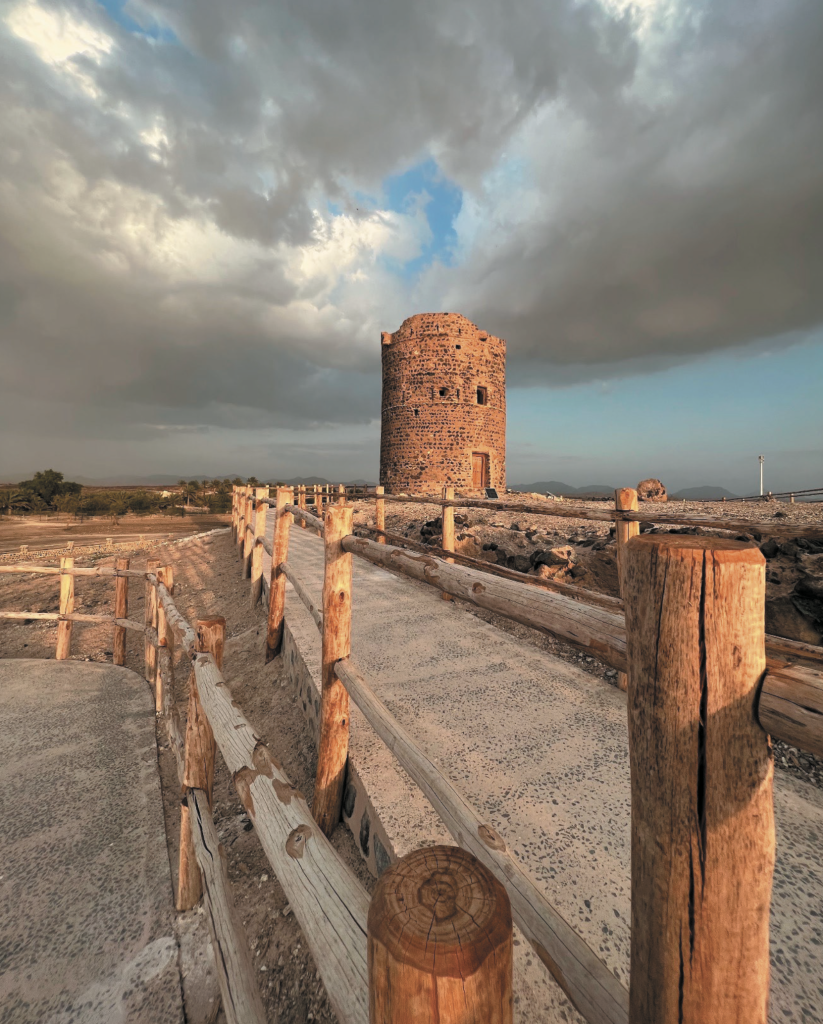In a new cultural achievement for the Emirate of Sharjah
Sharjah Archaeology Authority announces the inscription of ,” Dibba Al Hisn Fort,” “Fili Fortand “Wadi Shees” on the ICESCO List
In a significant cultural achievement for the Emirate of Sharjah, the Sharjah Archaeology Authority (SAA) announced that ICESCO (Islamic World Educational, Scientific, and Cultural Organization) has inscribed “Dibba Al Hisn Fort and Settlement,” “Fili Fort,” and “Wadi Shees” to the Islamic World Heritage List. his recognition emphasizes the cultural and historical significance of these sites, underscoring their role in preserving Islamic and human heritage.
The SAA submitted comprehensive nomination files to ICESCO during the 12th meeting of the Islamic World Heritage Committee, held in Shusha, Azerbaijan, which was celebrated as the Islamic World Cultural Capital for 2024.. These files emphasized the archaeological and historical significance of the nominated sites, alongside their architectural elements and reports on their preservation and conservation status. The SAA highlighted the cultural importance of these sites, underscoring their role in reinforcing Islamic cultural identity and preserving human heritage for future generations.
As a testament to Sharjah’s relentless efforts in leading the cultural scene on local, regional, and international levels, H.E. Eisa Yousif, Director General of the Sharjah Archaeology Authority (SAA), expressed great pride in the inclusion of these historical sites on the ICESCO World Heritage List. He stated, “The inclusion of these sites reflects international recognition of their historical and cultural value, and embodies the acknowledgment of Sharjah’s efforts to preserve its rich heritage. These sites are not just historical landmarks but are integral to the cultural identity of Sharjah and the UAE, contributing to the enrichment of human heritage. This aligns with the vision of His Highness Sheikh Dr. Sultan bin Muhammad Al Qasimi, Member of the Supreme Council and Ruler of Sharjah, who places great importance on preserving tangible heritage for future generations. This international recognition strengthens Sharjah’s position as a global cultural center committed to documenting and protecting heritage, ensuring it remains alive in the memory of humanity.”
H.E. Eisa Yousif, emphasized that this inclusion is not just a celebration of the importance of these archaeological sites, but the culmination of years of continuous efforts made by the SAA in collaboration with numerous partners and international experts. Their work involved studying, documenting, and presenting these sites as part of the global civilizational legacy.
He also pointed out that the Dibba Al Hisn Castle, Fili Fort, and Wadi Shees are not merely historical places but living witnesses to the interaction of civilizations that flourished in this region over the centuries. These sites tell stories of societal development, trade, and traditions that shaped the identity of the area.
Dibba Al Hisn Fort
Dibba al-Hisn Fort and Settlement, now listed on the ICESCO Islamic World Heritage List, stand as an exemplary site of cultural exchange and human settlement over five centuries. This site, rich in architectural features and artefacts, reflects a vibrant history where people sought refuge, engaged in trade, and sustained local markets. The fort safeguarded key trade routes, supporting fishing, agriculture, and commerce, with evidence of international trade through artefacts from China, India, and Europe.
The economic and cultural evolution at Dibba al-Hisn highlights its significance in regional and global history. From the 16th century onward, the site became a center of sea-based commerce, bolstered by the production of date molasses and the development of agriculture. Its enduring legacy as a hub of trade and cultural interchange, particularly through its strategic location, makes it an essential historical and heritage site, exemplifying the richness of Sharjah’s cultural heritage on the global stage.
Fili Fort
Fili Fort is distinguished by its strategic position, which has been pivotal in the region’s protection and security throughout history. The surrounding areas of Fili are celebrated for their historic aflaj irrigation system, a vital feature that has sustained life in the desert environment for centuries. The historic Fili Fort was constructed to oversee these crucial water systems and date palm plantations, safeguarding the caravans traveling from Al Dhaid to Al Ain and the Buraimi Oasis, as well as protecting the coastal trade routes of Oman.
Moreover, Fili’s location on the caravan route linking the western and eastern coasts of the Arabian Peninsula underscores its role in defending the important Hajar Mountains paths, ensuring the safety of pilgrims and traders alike. Fili’s heritage embodies stories of profound global significance, illustrating its vital role in preserving local communities and securing trade routes. It also sheds light on notable events of the 19th and 20th centuries.
Wadi Shees
Wadi Shees is located near the eastern coast of the UAE, encompassing the village of Shees, about 17 km from the city of Khor Fakkan and 95 km from Sharjah. The area is known for its natural beauty, characterized by towering mountains and farms irrigated by traditional Aflaj systems—testaments to ancient human ingenuity in water management. The region is also home to rare bird species that still inhabit its farms, with several environmental organizations undertaking efforts to preserve and study them.
The area boasts notable landmarks such as Al-Istiqama Mosque, Old houses of the village, Castles, and Farms connected to the Traditional Irrigation System (Falaj and Wadi Shees). Shees holds exceptional scientific value on a global scale, reflecting a unique environmental and geographical diversity that blends the Hajar Mountains and Aflaj, resulting in a rich plant cover and a habitat for rare birds and animals. The area is a unique model of environmental diversity and freshwater ecosystems that have helped preserve endangered plants and animals, making it a site of global importance for environmental researchers.
The inclusion of these sites on the ICESCO list marks a significant step in raising cultural awareness and preserving heritage. This recognition provides the sites with the necessary support and resources for their preservation and development. Moreover, it encourages cooperation among ICESCO member states in exchanging expertise and practices in the field of cultural heritage preservation.






